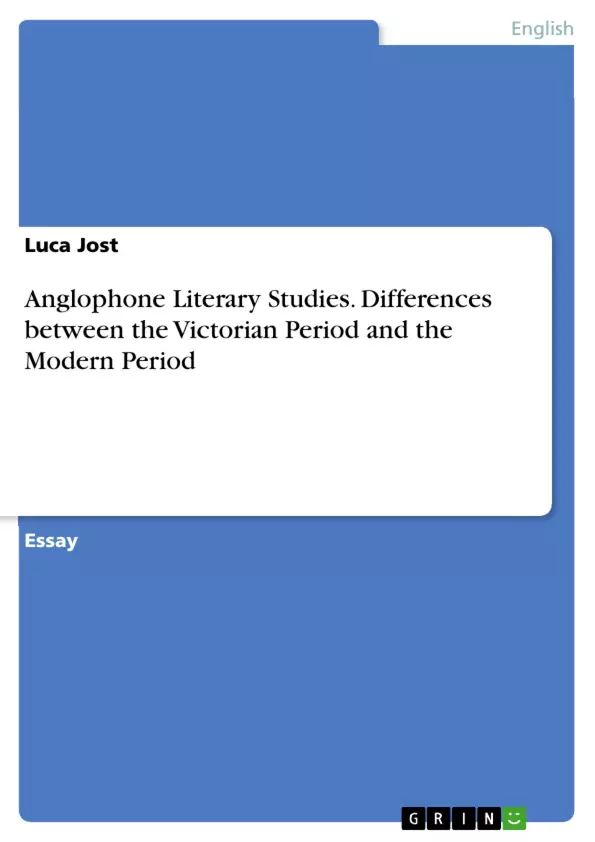This term paper in general is intended to present the differences between the Victorian Period and the Modern Period. It shows the differences of these two periods with the help of a comparative analysis of the two works The Mill on the Floss and Mrs. Dalloway. This is the second and main part of the term paper but before there is a short presentation presentation of the two periods, the two authors and the two novels in general. The first and a bit more theoretical part with the description of the periods and its authors in comparison with a short overview of the novels should help to understand the comparative analysis with my personal approaches way better.
Inhaltsverzeichnis (Table of Contents)
- INTRODUCTION
- VICTORIAN PERIOD
- GEORGE ELIOT
- THE MILL ON THE FLOSS
- MODERN PERIOD
- VIRGINIA WOOLF
- MRS. DALLOWAY
- COMPARATIVE ANALYSIS
- SOURCES
Zielsetzung und Themenschwerpunkte (Objectives and Key Themes)
This term paper aims to highlight the differences between the Victorian Period and the Modern Period. This analysis utilizes a comparative approach, focusing on the novels "The Mill on the Floss" and "Mrs. Dalloway." The paper begins with a brief introduction to the two periods, authors, and novels, providing context for the subsequent comparative analysis.
- Comparison of Victorian and Modern Periods
- Analysis of Character Portrayals
- Exploration of Social and Cultural Context
- Examination of Gender Roles and Expectations
- Themes of Individuality and Society
Zusammenfassung der Kapitel (Chapter Summaries)
- Introduction: Introduces the purpose and scope of the term paper, outlining the comparison between the Victorian Period and the Modern Period through the lens of "The Mill on the Floss" and "Mrs. Dalloway."
- Victorian Period: Provides a brief overview of Victorian Britain, highlighting its political, social, and economic context. It explores the reign of Queen Victoria and the influence of the Industrial Revolution.
- George Eliot: Presents a biographical sketch of Mary Anne Evans, the author who wrote under the pseudonym George Eliot. It highlights her literary contributions and the context of her writing.
- The Mill on the Floss: Summarizes the key narrative elements and characters of the novel, including the Tulliver family, their struggles, and the tragic ending.
- Modern Period: Offers a brief overview of the Modern Period, encompassing its various sub-periods and significant historical events, including the rise of industrialization and its impact on society.
- Virginia Woolf: Provides a biographical sketch of Virginia Woolf, focusing on her literary contributions and her role as a significant figure in Modernist literature.
- Mrs. Dalloway: Summarizes the key narrative elements and characters of the novel, including Clarissa Dalloway, Septimus Smith, and their respective journeys.
Schlüsselwörter (Keywords)
The core focus of this term paper lies on the comparison between Victorian and Modern periods, with specific attention to the literary works "The Mill on the Floss" and "Mrs. Dalloway." The analysis emphasizes character portrayals, social and cultural context, gender roles, and the themes of individuality and society. Key terms encompass Victorian Period, Modern Period, George Eliot, Virginia Woolf, "The Mill on the Floss," "Mrs. Dalloway," character analysis, social context, gender roles, and thematic interpretation.
- Citar trabajo
- Luca Jost (Autor), 2021, Anglophone Literary Studies. Differences between the Victorian Period and the Modern Period, Múnich, GRIN Verlag, https://www.grin.com/document/1268729



